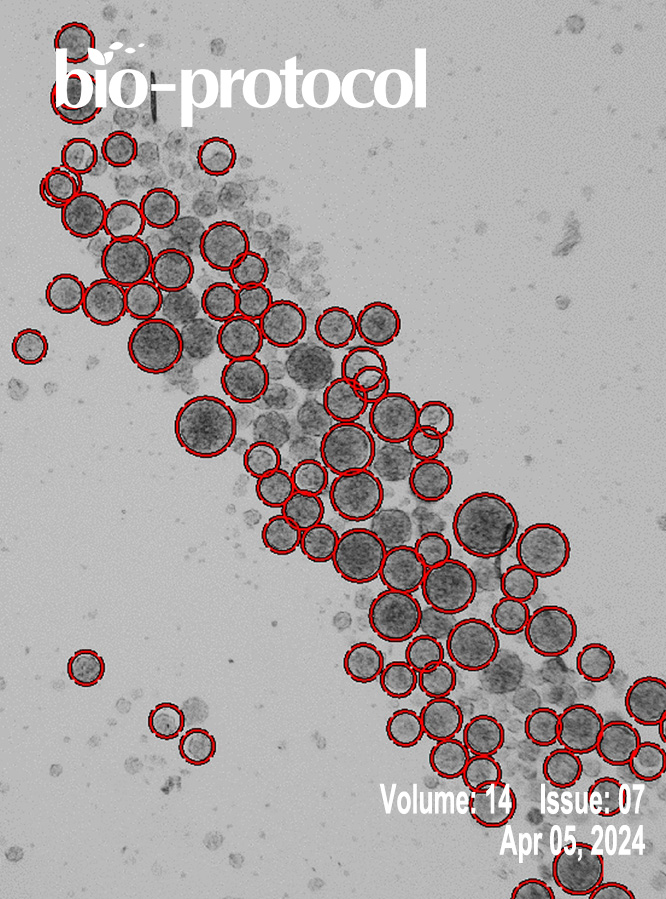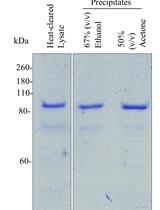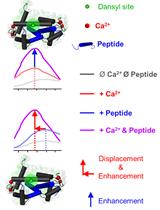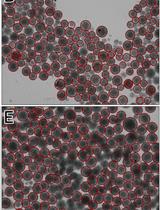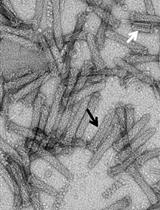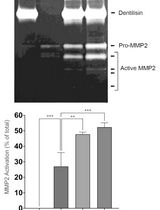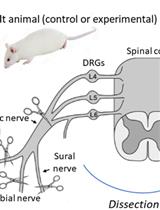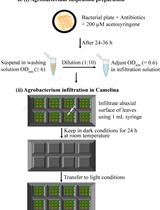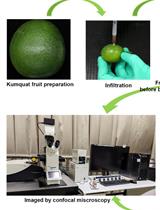Fluorometric Measurement of Calmodulin-Dependent Peptide–Protein Interactions Using Dansylated Calmodulin
使用丹磺酰化钙调蛋白的荧光测定法测量钙调素依赖性肽-蛋白相互作用
The assessment of peptide–protein interactions is a pivotal aspect of studying the functionality and mechanisms of various bioactive peptides. In this context, it is essential to employ methods that meet specific criteria, including sensitivity, biocompatibility, versatility, simplicity, and the ability to offer real-time monitoring. In cellular contexts, only a few proteins naturally possess inherent fluorescence, specifically those containing aromatic amino acids, particularly tryptophan. Nonetheless, by covalently attaching fluorescent markers, almost all proteins can be modified for monitoring purposes. Among the early extrinsic fluorescent probes designed for this task, dansyl chloride (DNSC) is a notable option due to its versatile nature and reliable performance. DNSC has been the primary choice as a fluorogenic derivatizing reagent for analyzing amino acids in proteins and peptides for an extended period of time. In our work, we have effectively utilized the distinctive properties of dansylated-calmodulin (D-CaM) for monitoring the interaction dynamics between proteins and peptides, particularly in the context of their association with calmodulin (CaM), a calcium-dependent regulatory protein. This technique not only enables us to scrutinize the affinity of diverse ligands but also sheds light on the intricate role played by calcium in these interactions.Key features• Dynamic fluorescence and real-time monitoring: dansyl-modified CaM enables sensitive, real-time fluorescence, providing valuable insights into the dynamics of molecular interactions and ligand binding.• Selective interaction and stable fluorescent adducts: DNSC selectively interacts with primary amino groups, ensuring specific detection and forming stable fluorescent sulfonamide adducts.• Versatility in research and ease of identification: D-CaM is a versatile tool in biological research, facilitating identification, precise quantification, and drug assessment for therapeutic development.• Sensitivity to surrounding alterations: D-CaM exhibits sensitivity to its surroundings, particularly ligand-induced changes, offering subtle insights into molecular interactions and environmental influences.Graphical overviewFluorescence emission profiles of dansylated-calmodulin (D-CaM) in different states. Fluorescence emission spectra of D-CaM upon excitation at 320 nm are depicted. Conditions include apo-D-CaM (gray), holo-D-CaM (red), apo-D-CaM bound to peptide (blue), and holo-D-CaM bound to peptide (purple). Corresponding structural representations of D-CaM next to each condition are superimposed on the respective spectra along with the hydrophobicity of the dansyl environment, which increases upon binding of peptide or Ca2+ to D-CaM. Upon peptide binding to D-CaM, there is an enhancement in the fluorescent intensity of the spectra; upon Ca2+ binding, there is an enhancement of the intensity and a leftward shift of the spectra.


